Figures & data
Figure 1. Map of Sijori Growth Triangle formed by the urban areas (indicated by line shading) of Johor Bahru, Malaysia (population ∼1.8 million), Singapore (∼5 million), and Batam, Indonesia (∼1 million). Stars are locations of heavy industries in Singapore (Jurong Industrial Estate and Jurong Island). Solid thick arrows are main wind directions experienced during the SW and NE monsoons seasons, respectively.
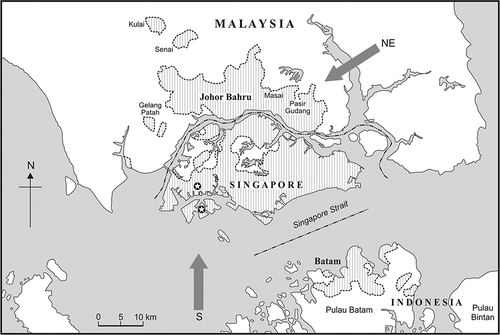
Figure 2. Per-capita anthropogenic emissions of (a) black carbon aerosols, (b) organic carbon aerosols, (c) CO, (d) NOx, (e) SO2, and (f) NMHC from 25 Asian countries. The national emissions were taken from CitationOhara et al. (2007) and divided by the corresponding country populations using 2000 as reference year. National emissions do not include contributions from aviation and shipping.
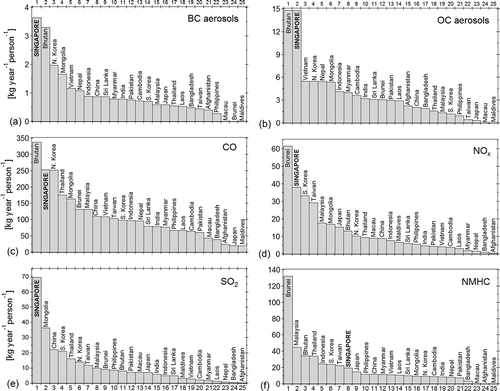
Figure 3. Anthropogenic emissions normalized by GDP for the six pollutants and 25 countries presented in National emissions were taken from CitationOhara et al. (2007) and divided by the corresponding country GDP using 2000 as reference year. The GDP data (in 2005 US$) were obtained from the International Macroenomic Dataset compiled by USDA-ERS (CitationUnited States Department of Agriculture–Economic Research Service, 2010). National emissions do not include contributions from aviation and shipping. No GDP information is available for North Korea. Note the logarithmic scale for the SO2 emissions in panel (e). Black markers correspond to Singapore's emissions.
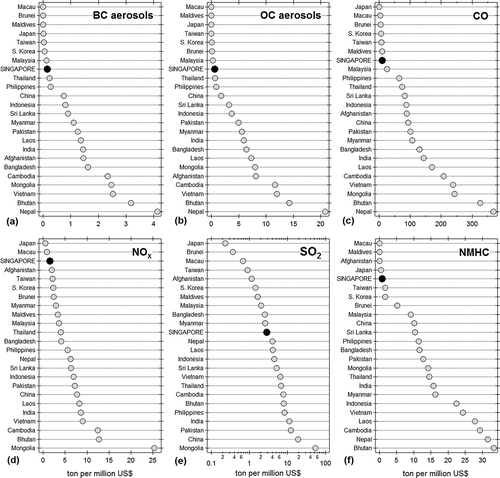
Figure 4. Per-capita emissions of (a) CO, (b) NOx, (c) SO2, and (d) NMHC from selected cities worldwide. Data were obtained from local emission inventories and normalized by the corresponding populations of the respective cities as reported in their own emission inventories: Mexico City (CitationSecretaria del Medio Ambiente del Gobierno del Distrito Federal, 2010a); Hong Kong (CitationEnvironmental Protection Department, 2009); Los Angeles (South Air Basin), San Francisco, and San Diego (CitationAir Resources Board California Environmental Protection Agency, 2009); Boston (CitationMassachusetts Department of Environmental Protection, 2007); Paris (Ile de France) (CitationAIR PARIF, 2010); Rio de Janeiro (CitationFundação Estadual de Engenharia do Meio Ambiente, 2004); Thessaloniki (CitationTsilingiridis et al., 2002; CitationMoussiopoulos et al., 2009); London (Greater London) (CitationMattai and Hutchinson, 2008); and Santiago (CitationDICTUC, 2007; CitationUniversidad de Chile–Instituto de Asuntos Públicos, 2002). Singapore's emissions were obtained from CitationOhara et al. (2007). Note that Singapore's population is the same for the country and for the city.
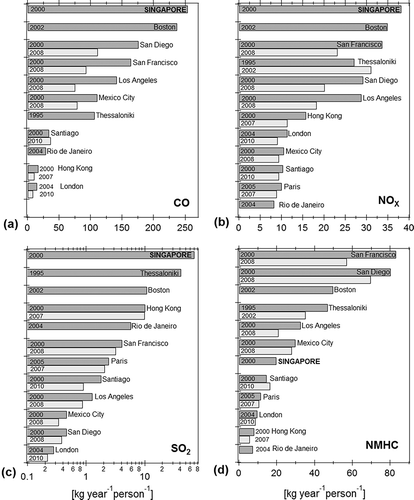
Figure 5. Annual trends of per-capita emissions of CO2 for Singapore and selected countries around the world. Data were obtained from the United Nation's Millennium Development Goals Indicators updated on July 2011 (CitationUnited Nations, 2011a).
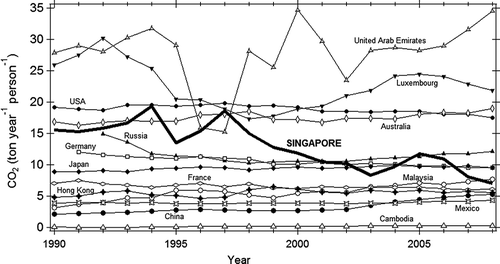
Figure 6. Per-capita anthropogenic emissions of CO2 and carbon equivalent footprints from 26 Asian countries. National CO2 emissions correspond to the emissions reported in the United Nation's Millennium Development Goals Indicators updated on July 2011 (CitationUnited Nations, 2011a). Per-capita carbon equivalent footprints include contributions from CO2, CH4, N2O and HFCs, PFCs, and SF6, and were adapted from CitationHertwich and Peters (2009). Population data from the United Nations (CitationUnited Nations, 2011b) were used to calculate the per-capita CO2 emissions and carbon equivalent footprints. Only contributions from fossil fuels and process emissions are considered. Emissions related to land-use change are excluded. CO2 emissions do not include international bunker fuel storage. The dashed line indicates the average CO2 per-capita emission of 3.3 ton person−1 yr−1 in Asia.
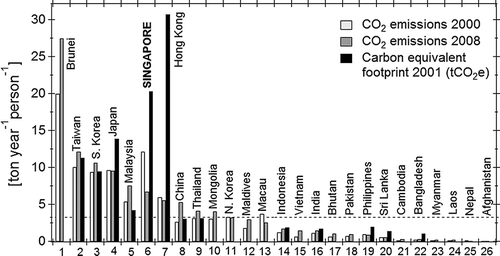
Figure 7. Per-capita greenhouse gas emissions for selected cities around the word. Numbers inside bars correspond to baseline years. The emissions were adapted from CitationKennedy et al. (2011) with the exception of Singapore and Mexico City, whose emissions were taken from elsewhere (World Resources Institute, 2011; CitationSecretaria del Medio Ambiente del Gobierno del Distrito Federal, 2010b). Emissions include contributions from transportation, energy use, industrial processes, waste, aviation, and international bunkers.
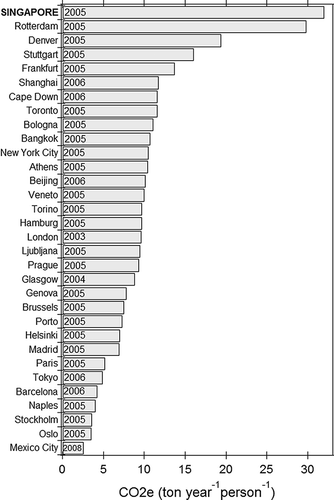
Table 1. Annual and 24-hr concentrations (μg m−3) of PM2.5 in Singapore
Figure 8. Annual average concentrations of PM2.5 between 2000 and 2010 for selected cities. Light and dark shaded areas indicate PM2.5 levels below the WHO guidelines and EPA standards, respectively. Data were obtained from historical databases of air quality monitoring networks and local air quality reports: Singapore (CitationMinistry of the Environment and Water Resources, 2011), London (CitationGriffin et al., 2010), Hong Kong (CitationEnvironmental Protection Department, 2009), Mexico City (CitationSecretaria del Medio Ambiente del Gobierno del Distrito Federal, 2011), Santiago (CitationSistema Nacional de Información Ambiental, 2010), Tokyo (CitationTokyo Metropolitan Government, 2010), Californian cities (CitationAir Resources Board California Environmental Protection Agency, 2011), and other U.S. cities (EPA, 2011).
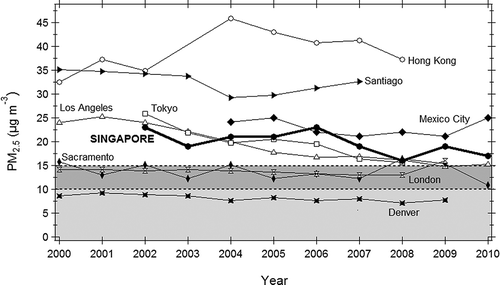
Figure 9. Annual average concentrations of PM2.5 in 2007 for selected cities. Vertical light and dark shaded areas indicate PM2.5 levels below the WHO guidelines and EPA standards, respectively. Data cities included in were obtained from the same references, for Lima and remaining cities from additional references (CitationDirección General de Salud Ambiental, 2010; CitationOntario Ministry of the Environment, 2008).
